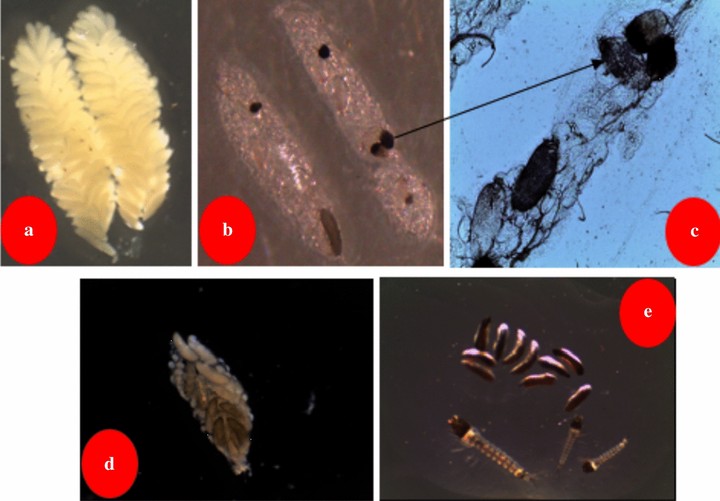Infection of highly insecticide-resistant malaria vector Anopheles coluzzii with entomopathogenic bacteria Chromobacterium violaceum reduces its survival, blood feeding propensity and fecundity

Abstract
Background
This is now a concern that malaria eradication will not be achieved without the introduction of novel control tools. Microbiological control might be able to make a greater contribution to vector control in the future. The interactions between bacteria and mosquito make mosquito microbiota really promising from a disease control perspective. Here, the impact of Chromobacterium violaceum infections, isolated from both larvae and adult of wild-caught Anopheles gambiae sensu lato mosquitoes in Burkina Faso, was evaluated on mosquito survival, blood feeding and fecundity.
Methods
To assess entomopathogenic effects of C. violaceum infection on mosquitoes, three different types of bioassays were performed in laboratory. These bioassays aimed to evaluate the impact of C. violaceum infection on mosquito survival, blood feeding and fecundity, respectively. During bioassays mosquitoes were infected through the well-established system of cotton ball soaked with 6% glucose containing C. violaceum.
Results
Chromobacterium violaceum kills pyrethroid resistant Anopheles coluzzii (LT80 of 8.78 days ± 0.18 at 108 bacteria cell/ml of sugar meal). Interestingly, this bacterium had other negative effects on mosquito lifespan by significantly reducing (~ 59%, P < 0.001) the mosquito feeding willingness from day 4-post infection (~ 81% would seek a host to blood feed) to 9- day post infection (22 ± 4.62% would seek a host to blood feed). Moreover, C. violaceum considerably jeopardized the egg laying (~ 16 eggs laid/mosquito with C. violaceum infected mosquitoes vs ~ 129 eggs laid/mosquito with control mosquitoes) and hatching of mosquitoes (a reduction of ~ 22% of hatching rate with C. violaceum infected mosquitoes). Compared to the bacterial uninfected mosquitoes, mosquitoes infected with C. violaceum showed significantly higher retention rates of immature eggs and follicles.
Conclusion
These data showed important properties of Burkina Faso C. violaceum strains, which are highly virulent against insecticide-resistant An. coluzzii, and reduce both mosquito blood feeding and fecundity propensities. However, additional studies as the sequencing of C. violaceum genome and the potential toxins secreted will provide useful information render it a potential candidate for the biological control strategies of malaria and other disease vectors.